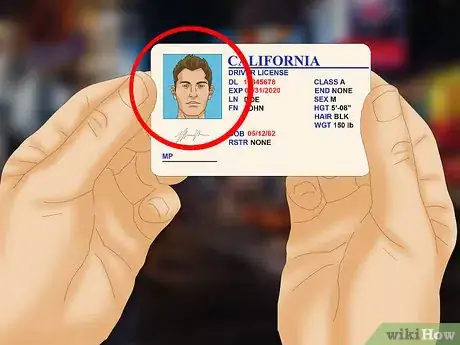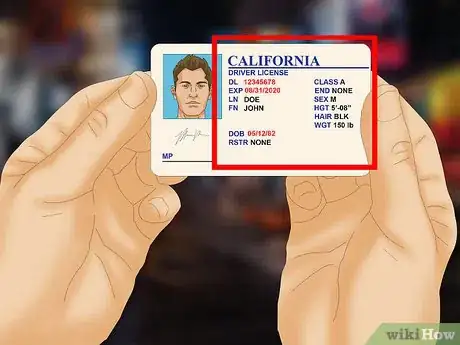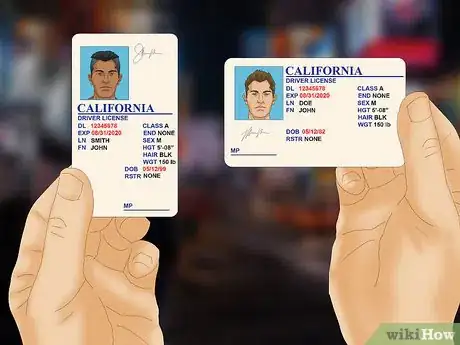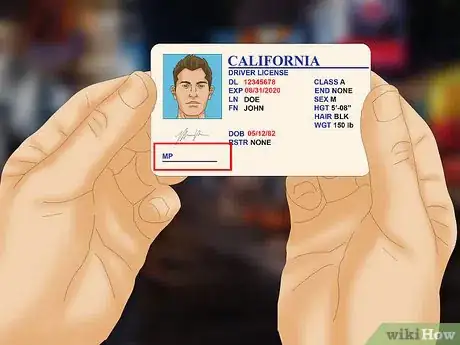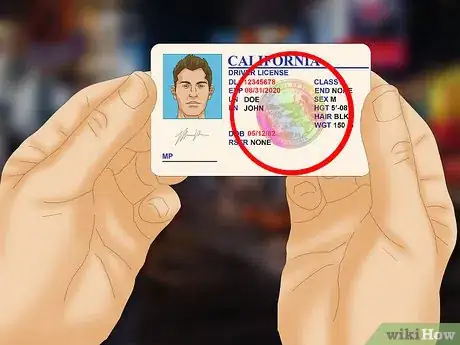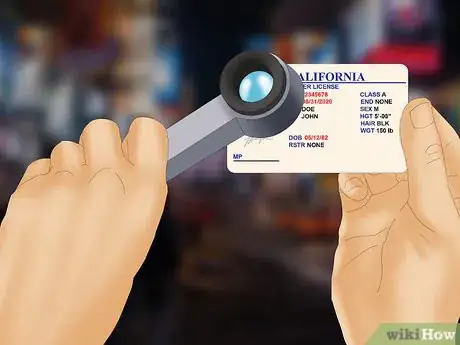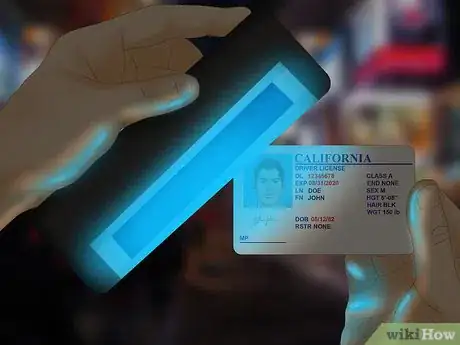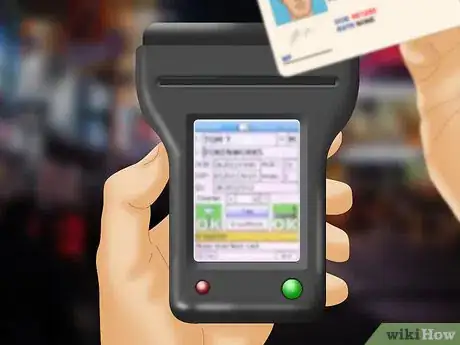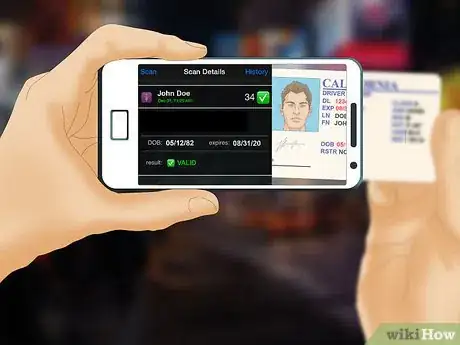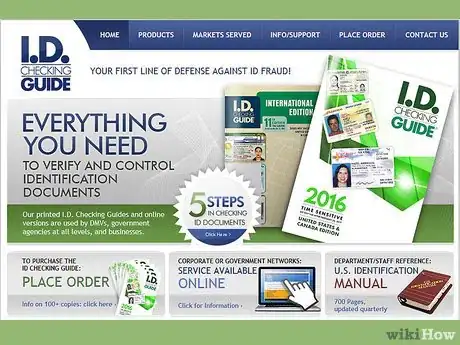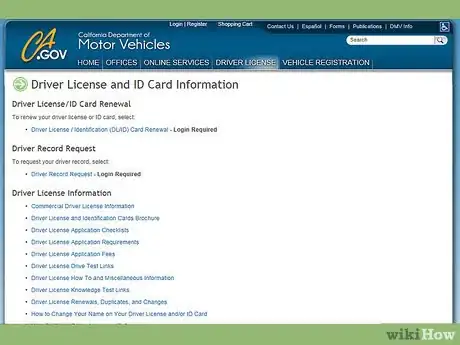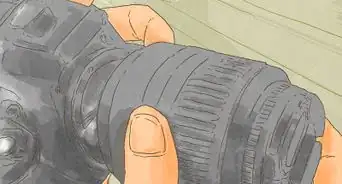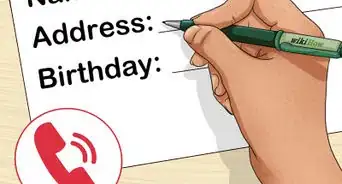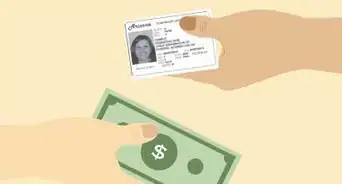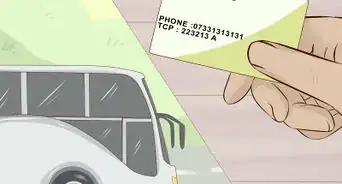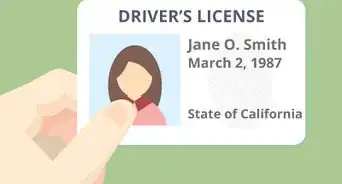This article was co-authored by Clinton M. Sandvick, JD, PhD. Clinton M. Sandvick worked as a civil litigator in California for over 7 years. He received his JD from the University of Wisconsin-Madison in 1998 and his PhD in American History from the University of Oregon in 2013.
There are 11 references cited in this article, which can be found at the bottom of the page.
This article has been viewed 68,152 times.
Security is increasingly becoming an important part of our lives, and proper identification is crucial in many settings. Immediately, when we mention “fake IDs,” our thoughts go to college students using fake driver’s licenses to gain access to bars. But we also need to be more and more concerned with identifying people in business, in employment settings, in transportation. If you are in a position of authority or security, it can help to know how to identify some elements of false identification cards or driver’s licenses.
Steps
Spotting Security Features of ID Cards
-
1Check for a clear quality photo. The picture should be well-lit and shouldn't be blurry - you should clearly be able to see the person's face in it. Ensure that the person in the photo and the person in front of you are the same.[1] This seems obvious, but many people using fake IDs hope that the person checking them will be too busy to look closely at the photo.
-
2Check the printed details. One trick of fake IDs is to use another person’s expired ID card or license. Check the card to make sure that it is not expired. Check to see that the type is consistent and hasn’t been tampered with.[2]Advertisement
-
3Become familiar with various license formats. In many states, driver’s licenses for minors are formatted vertically, while those for people over 21 are horizontal.[3]
-
4Look for microprint. Microprint is a type style that is so small that it appears as a straight line to the naked eye. It is only visible with a special magnifier. Currently, 48 states use microprint as a security feature.[4]
-
5Check the plastic laminate for signs of splitting. A fake ID is likely to be of poor quality plastic, may show signs of tampering or “splitting,” and is likely to bend or fold more easily than a genuine one.[5]
-
6Look for the holographic image. State-issued driver's licenses carry an image that flashes in the light. Fake licenses may attempt to replicate this by printing a dim image in the background with a bright color.[6]
Using Technology to Spot Fake Documents
-
1Invest in a 10x magnifier. For quick and relatively easy verification, a 10x magnifier can be used to verify the microprint on most current IDs or licenses. The microprint that appears to the naked eye as a solid line will appear as text under a magnifier.[7]
-
2
-
3Invest in an ID scanner. For a relatively low cost, compared to the cost of getting caught serving alcohol to minors, for example, it is possible to purchase a scanner that will read a variety of IDs or licenses and verify validity.[10] [11] These are often hand-held devices that can be used at the point of admission to verify authenticity.
-
4Get a smart phone app. There are even some available smart phone apps that will scan bar codes on IDs to verify authenticity.[12] Many of these are free and will turn an iPhone or iPad into a useful scanner.
Getting Training for Security Staff
-
1Use published reference materials. The Driver’s License Guide Company has published an I.D. Checking Guide with the most current information about licenses in the U.S. and Canada.[13]
-
2Use state-published references. Many states publish helpful information about authenticating their driver’s licenses.[14] Become familiar with the states closest to you.
-
3Participate in training. Search for organizations that will offer training in your area or online about identifying security features of driver’s licenses and other ID cards. There are private security companies that offer such classes. Alternatively, you may be able to reach out to a local sheriff’s office, district attorney, or other state agency.
References
- ↑ http://www.idcardgroup.com/blog/post/id-card-design-tips-security-features-holograms-technologies-part-1.aspx
- ↑ https://www.driverslicenseguide.com/5-steps.html
- ↑ https://www.driverslicenseguide.com/5-steps.html
- ↑ http://www.campussafetymagazine.com/article/How-to-Spot-a-Fake-ID-Part-1#
- ↑ http://www.idcardgroup.com/blog/post/id-card-design-tips-security-features-holograms-technologies-part-1.aspx
- ↑ http://www.idcardgroup.com/blog/post/id-card-design-tips-security-features-holograms-technologies-part-1.aspx
- ↑ http://www.campussafetymagazine.com/article/How-to-Spot-a-Fake-ID-Part-1#
- ↑ http://www.cissecuritysolutions.completewebpages.com/f/counterfeit-detection-manual.pdf
- ↑ https://www.driverslicenseguide.com/spot-fake-id-infographic.html
- ↑ http://www.toptenreviews.com/computers/scanners/best-id-scanners/
- ↑ http://www.idscanner.com/tutorial/how-to-check-ids/
- ↑ http://www.nydailynews.com/life-style/tech-startup-bars-prevent-underage-drinking-summer-100-deadliest-days-article-1.1820234
- ↑ https://www.driverslicenseguide.com/book-us.html
- ↑ http://www.ct.gov/dmv/cwp/view.asp?a=805&q=379684
